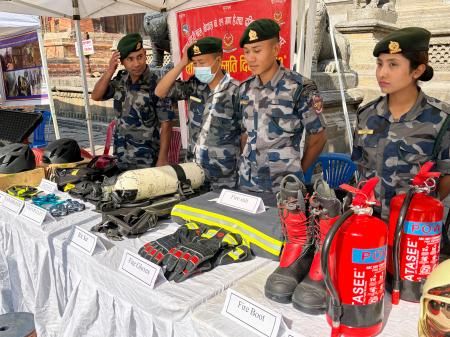Nepal Earthquake: A Decade of Memorial and Building Disaster Resilience
Ten years after the devastating 2015 Nepal earthquake, the nation continues its journey of remembrance and rebuilding. The 7.8 magnitude earthquake, and its powerful aftershocks, claimed thousands of lives, left millions homeless, and inflicted billions of dollars in damage. While the physical scars are slowly healing, the emotional and societal impacts remain profound, highlighting the crucial need for long-term disaster resilience strategies.
Remembering the Victims: Memorials and National Healing
The earthquake's impact transcended physical destruction; it left an indelible mark on the Nepalese psyche. Numerous memorials have been constructed across the country, serving as poignant reminders of the tragedy and spaces for collective mourning. These memorials, however, go beyond simple monuments. Many incorporate elements designed to foster healing and community building.
- Kathmandu Valley Memorial Park: This large-scale memorial, located near the epicenter of the earthquake's destruction, offers a space for reflection and remembrance.
- Community-Based Memorials: Smaller, localized memorials are found in villages across Nepal, often incorporating traditional practices and local artistic expression. These serve as important focal points for individual communities to process their grief and commemorate their lost loved ones.
- Living Memorials: Some initiatives focus on "living memorials," such as reforestation projects or community development programs, transforming the act of remembrance into positive action.
These diverse forms of commemoration are vital for national healing and ensuring the memory of the earthquake serves as a catalyst for future preparedness.
Building Back Better: Nepal's Progress in Disaster Resilience
Nepal's response to the 2015 earthquake has spurred significant advancements in disaster resilience. The nation has implemented various strategies to mitigate the risks of future seismic events. However, challenges remain.
Key advancements in disaster resilience:
- Improved Building Codes: Stricter building codes, incorporating earthquake-resistant designs, are now in place, aiming to ensure future structures can withstand seismic activity.
- Early Warning Systems: Investment in early warning systems, including seismic monitoring networks, is enhancing the ability to provide timely alerts, enabling quicker evacuations and reducing potential casualties.
- Community-Based Disaster Preparedness: Initiatives focusing on community-based disaster preparedness and response are empowering local communities to take an active role in mitigating risks. This includes training programs on first aid, search and rescue, and community-level emergency response planning.
- Infrastructure Development: Significant progress has been made in rebuilding crucial infrastructure, including roads, schools, and hospitals, with a greater focus on seismic safety.
Ongoing Challenges:
- Funding and Resource Constraints: Securing sufficient funding and resources for long-term resilience programs remains a significant challenge.
- Enforcement of Building Codes: Ensuring consistent and effective enforcement of the new building codes across all regions presents an ongoing hurdle.
- Geographical Challenges: Nepal's mountainous terrain presents unique logistical and geographical challenges in implementing and maintaining disaster resilience measures.
The Road Ahead: A Collaborative Approach to Disaster Resilience
The journey towards complete disaster resilience in Nepal is ongoing. It requires a collaborative effort involving the government, international organizations, non-governmental organizations (NGOs), and local communities. Continuous investment in education, infrastructure, and community-based programs is crucial for reducing vulnerability and building a more resilient nation.
International collaboration remains essential, providing technical expertise, funding, and support for long-term initiatives. Furthermore, the lessons learned from the 2015 earthquake should be integrated into broader disaster risk reduction strategies globally.
This decade marks a pivotal moment for Nepal. By learning from the past, fostering collaboration, and prioritizing long-term resilience strategies, Nepal can build a future where communities are better prepared to withstand the impact of natural disasters. The memory of the 2015 earthquake should not only serve as a reminder of the devastation but also as a catalyst for a safer and more secure future.
Call to Action: Learn more about organizations working to support Nepal's disaster resilience efforts and consider contributing to their vital work. You can find resources and links to reputable organizations through a simple online search.
